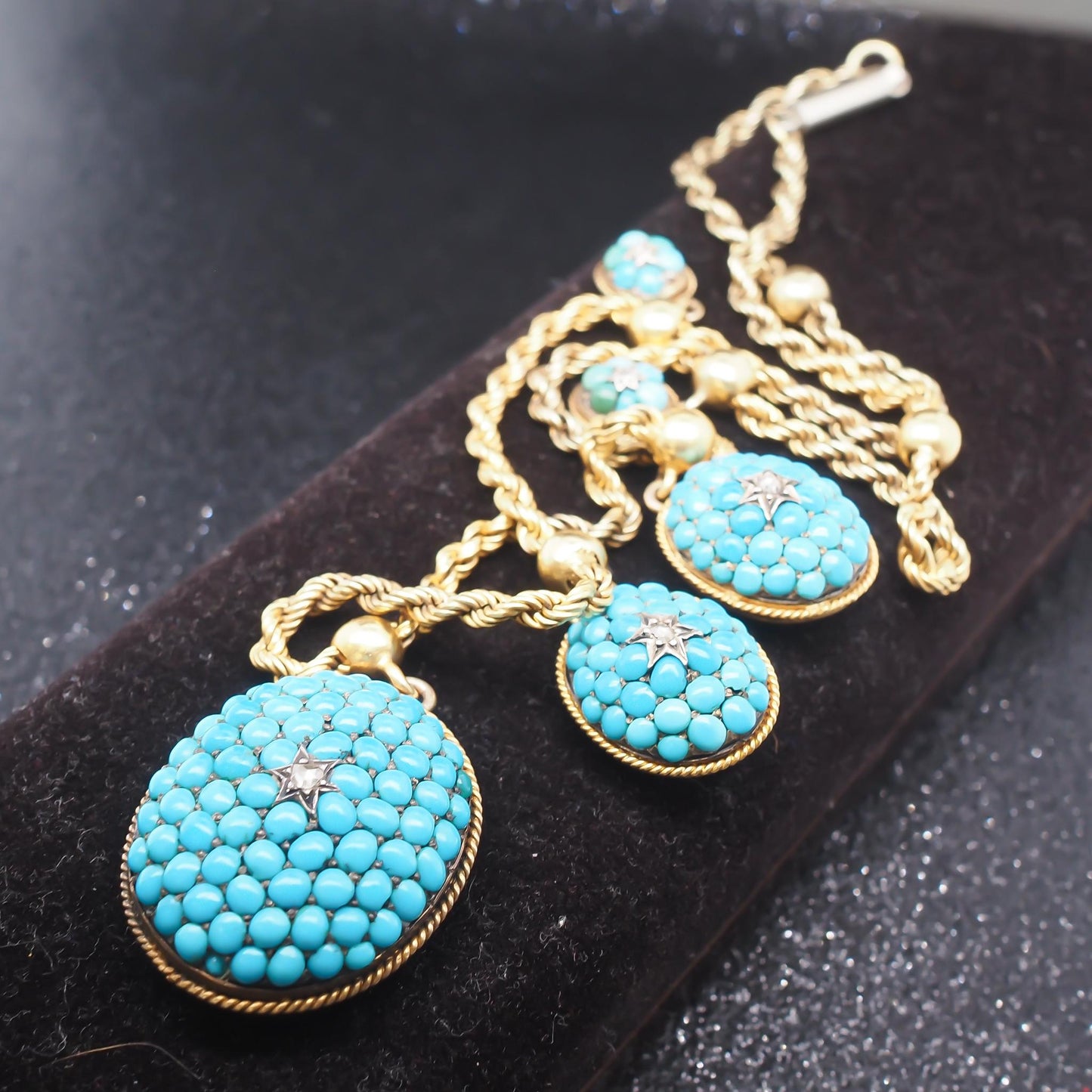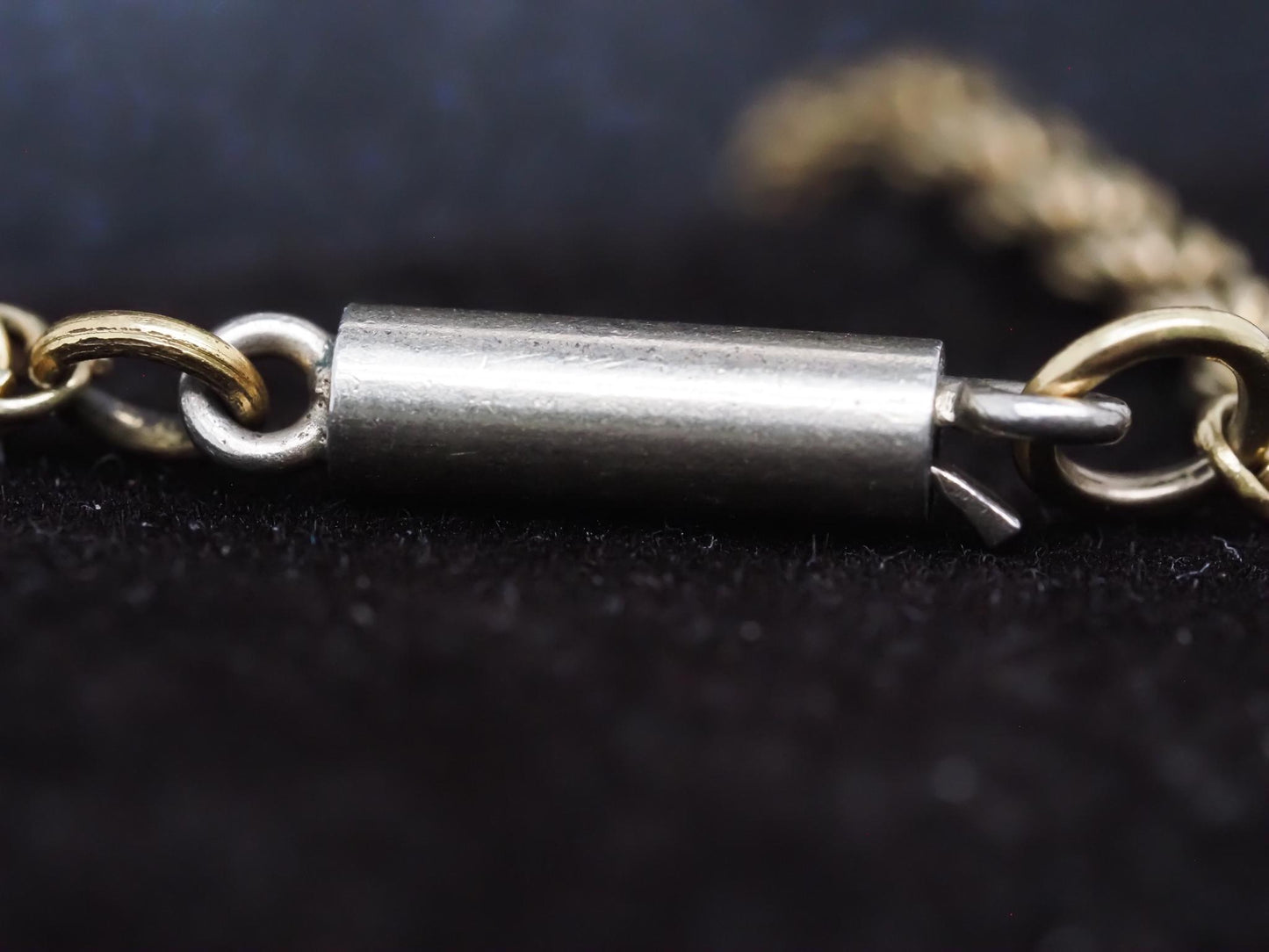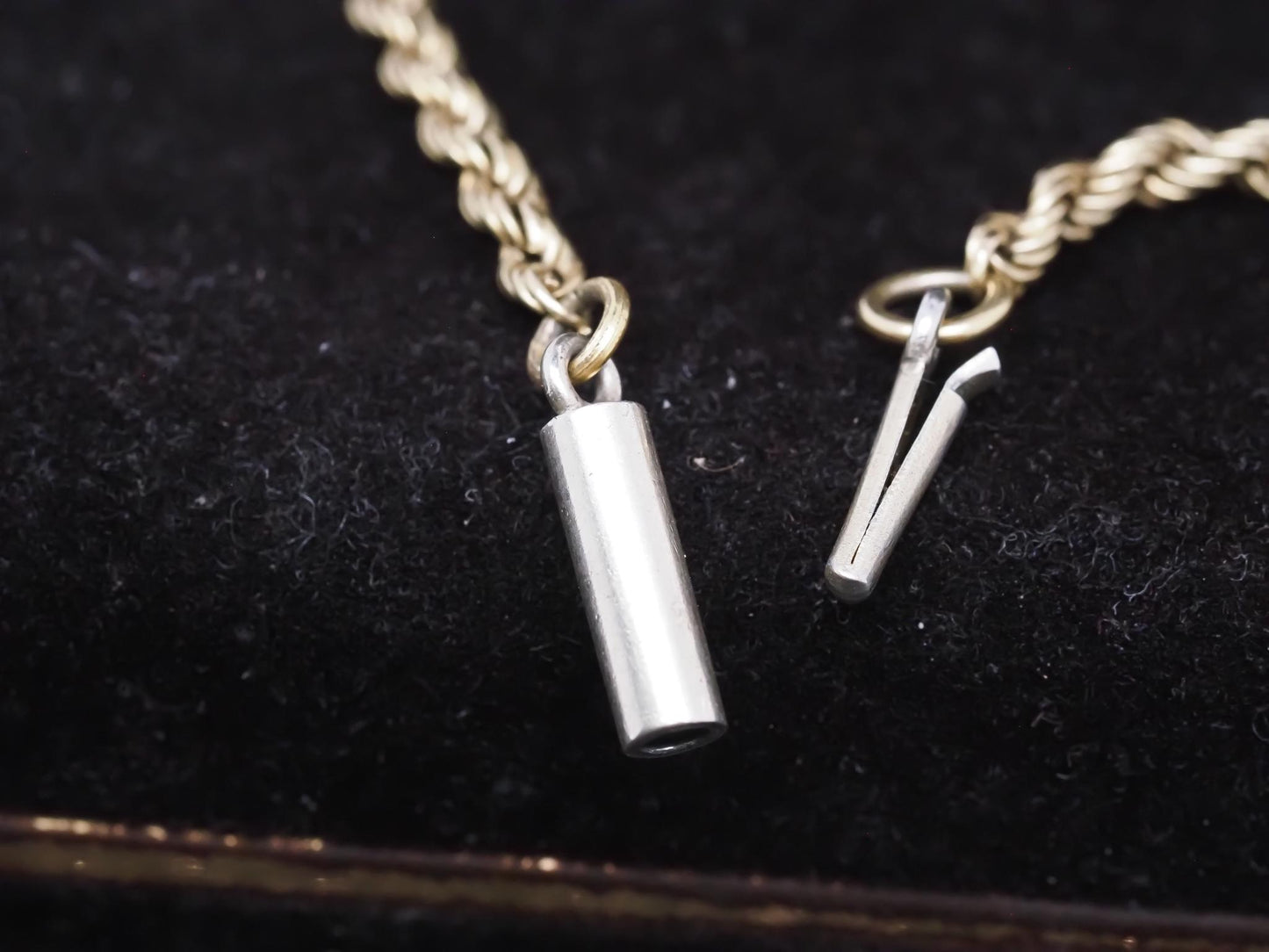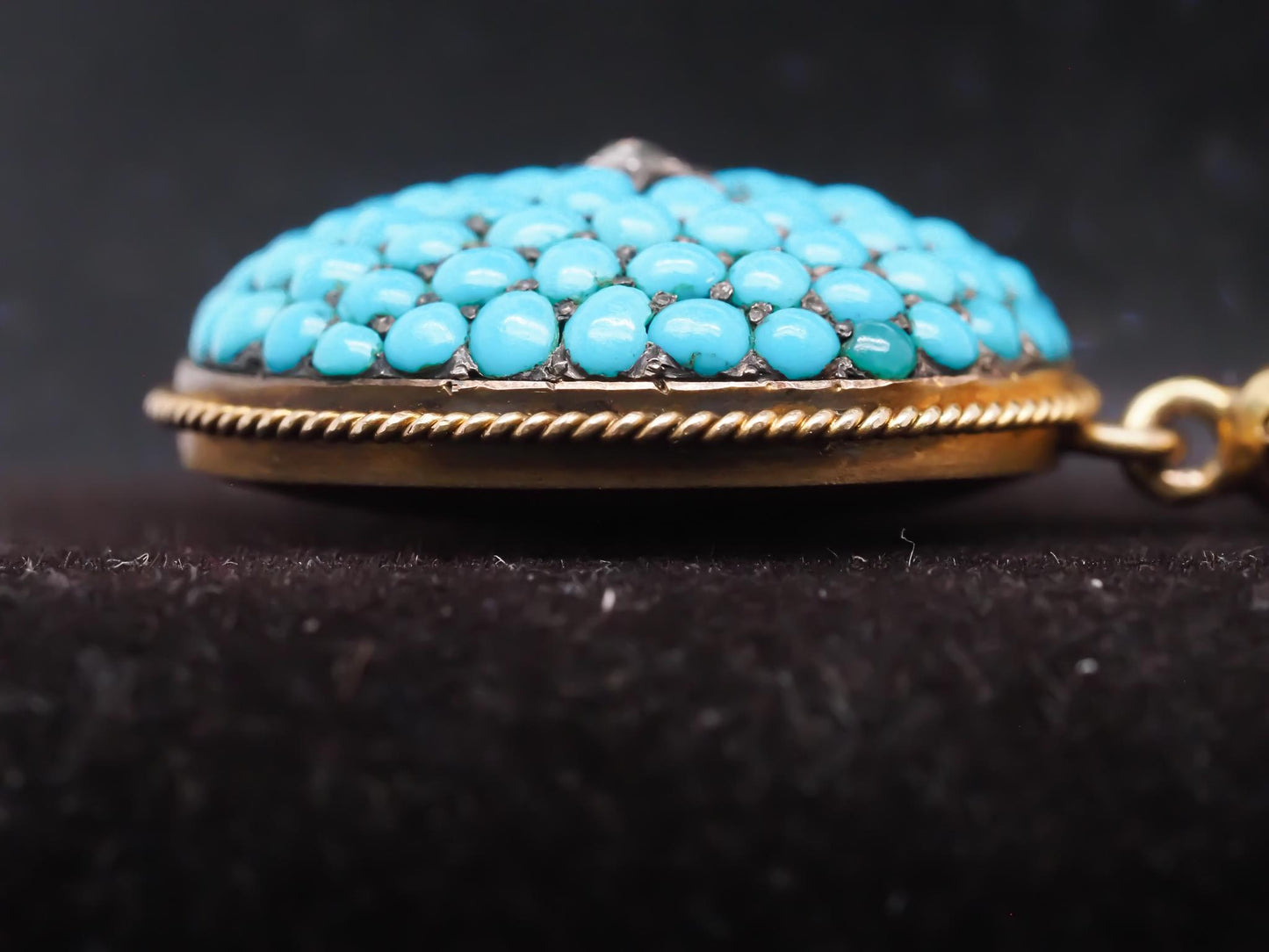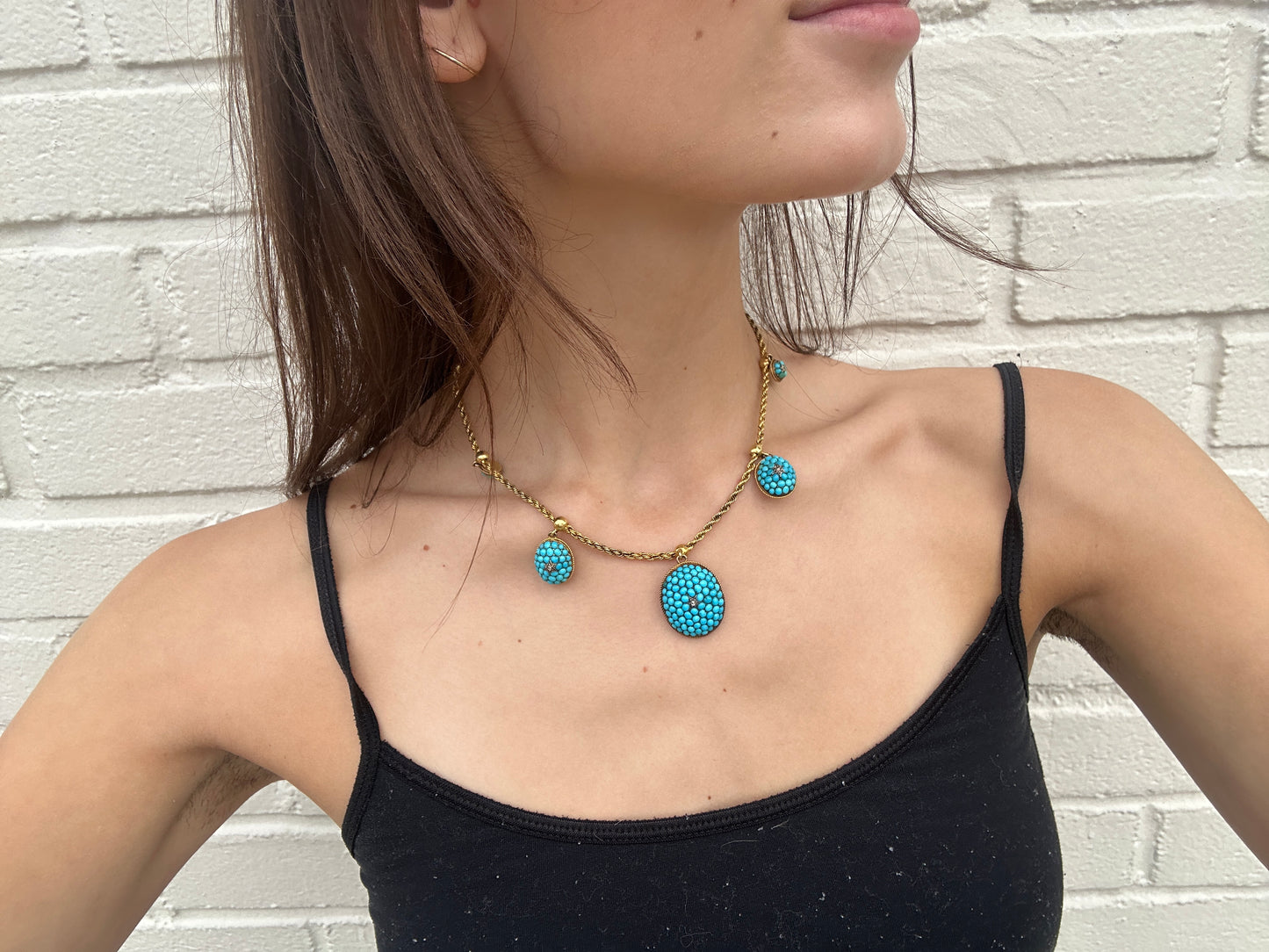The Verma Group
Victorian Gold Turquoise and Rose Cut Diamond Necklace
Victorian Gold Turquoise and Rose Cut Diamond Necklace
Couldn't load pickup availability
Victorian Era:
Time Period: The styles of the Victorian wedding ring and engagement ring were defined by the reign of Queen Victoria from 1837 - 1901 and her everlasting affection for her beloved husband Albert. Victoria too had a great influence on the jewelry styles of the time, and it was her great love of diamonds that led to a revolution in diamond rings. The Victorian era is separated into three distinct times - which all have their own unique styles and history. These are the Early Victorian period, the Mid-Victorian period and the Late Victorian period.
Description of Era: Changes to the metals and diamond gemstones used to create wedding rings and engagement rings occurred during the Victorian eras.
The first was the introduction of lower karat gold alloys; before 1854, precious rings were created mainly with 22k or 18k gold (75% pure gold alloyed with copper, silver, nickel, or a mixture of these metals) and silver, but after 1854 the gold standards changed and rings created with 15k gold, 12k gold, and 9k gold became legal on the market.
The second important change was the opening of the South African diamond mines in 1870; before 1870 diamonds were quite rare and most diamond rings contained clusters of small diamonds, but after 1870 when the South African mines opened large diamonds became available for use in wedding rings and engagement rings.
Rings from the Late Victorian period are defined in a large part by their use of diamonds, cluster and marquise boat shapes, use of pearls and light airy styles which were an inspiration for rings made in the upcoming Edwardian period.
Victorian engagement rings largely changed with the diamond rush. Platinum was often used for ring settings. There was also a shift from handcrafted rings to rings that were mass produced using machines. This was the era when handcrafted rings went from a mainstay to a mere novelty, and many of the techniques of metal working were lost to history.
The Late Victorian era was also when the solitaire diamond engagement ring made its first debut and quickly became well-liked by the mid-1890s. Platinum became widely used for settings replacing gold and silver in popularity. Predominant jewelry themes during the Late Victorian period were bows and ribbons, lace-type filigree, stars, feathers, double hearts, crowns, doves, oak leaves, grape clusters and Egyptian designs.
Popular gemstones used in Victorian wedding rings and engagement rings, in addition to diamonds and pearls included aquamarine, peridot, rubies, sapphires, opals, amethyst, chrysoberyl, turquoise and emeralds. Rings were made with metals including 18k, 15k 12k and 9k yellow gold, rose gold, silver and platinum became the preferred metal for diamond and gemstone settings in luxury pieces.
When you choose to go vintage with VERMA, you are cutting out the use for further mining and environmental damages which are a byproduct. In addition, the diamonds used in our collection are all conflict-free; as the conflict mines were in production after our pieces are dated.
Share

